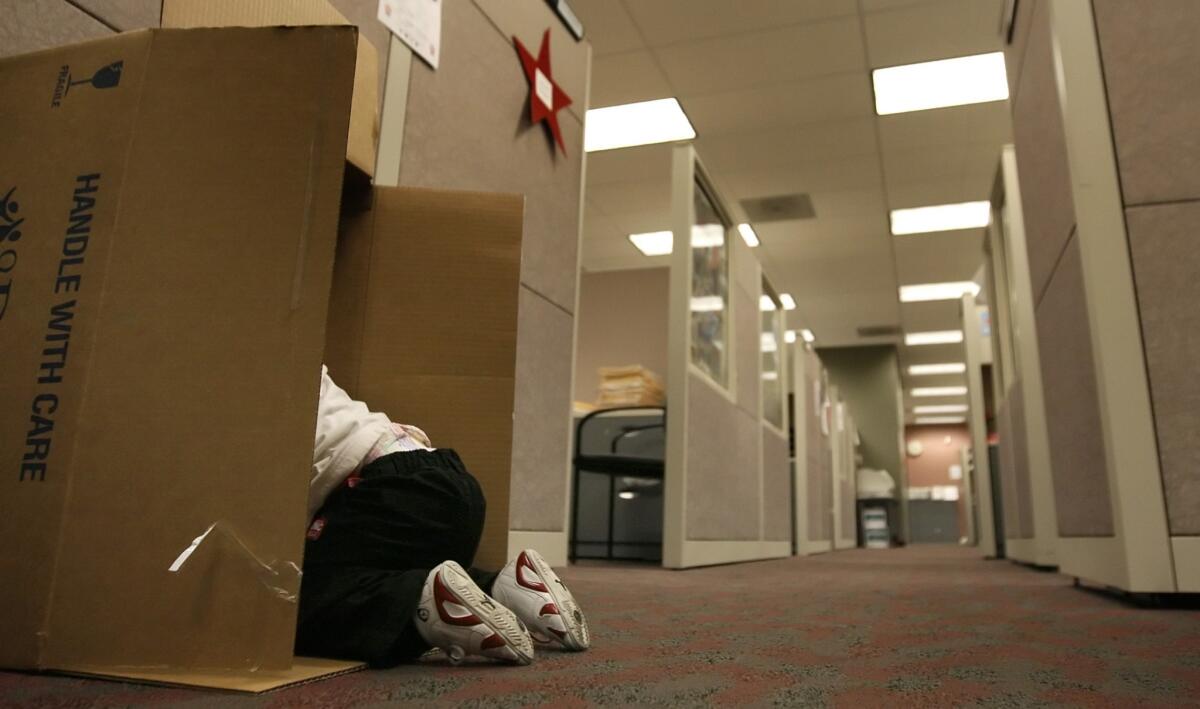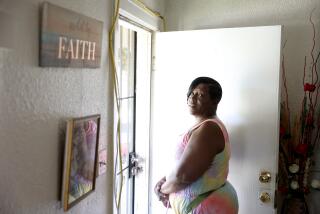Too few foster homes for children in need

The Los Angeles County foster care system has a new crisis â one that canât be resolved by yanking children from troubled parents.
In fact, more children in the system would only make things worse because thereâs no where to put them in a county that has run out of beds in foster homes.
The shortage has been a perennial problem, but it reached crisis level this summer because of an uptick in child abuse reports after the death of an Antelope Valley boy whoâd been left with a mother accused of neglect. She has been charged with murdering her son.
The lack of foster homes means traumatized children removed from their parents are often crammed into temporary quarters where toddlers can spend hours in dirty diapers and teenagers sometimes have to sleep on the floor.
âWe canât even find placements for newborns,â social worker Nancy Razo told me. The lack of a computerized tracking process means it can take a social worker a hundred phone calls to find a bed for a single child.
The number of children in foster care has been dropping over the years, so the shortfall surprised me. Foster parents are the linchpin of the child welfare system, but most of us donât know much about what their role involves.
We hear about horror stories and saintly extremes: The Palmdale foster mother accused of beating and torturing her children. Or the Camarillo family whose love helped six disabled children grow into happy and productive adults.
But itâs the thousands of people in the middle that make the system run. So I joined dozens of prospective parents at an orientation this week, to try to understand what draws them in and what drives them off.
::
The crowd at the South Los Angeles community center was heavy on retirees and people in the helping professions: nurses, child care workers, teachers. Some were familiar with the process; theyâd begun and backed out before. Others were drawn by news accounts of the shortage or appeals at church.
Many were surprised by the lengthy process â home inspections, background checks, six weeks of parenting classes â but heartened by the bottom line: Theyâre children. Love them and youâll do fine.
Some, like Rochel Disi, grew up in a family that cared for foster children. The drug-addicted newborn she helped raise is now 28 and dancing on a Broadway stage. Disi, who runs a preschool, is now an empty nester. âIâm separated from my husband. My children are gone. Whatâs good for me,â she said, âis more kids in my home.â
She understands the tightrope that foster parents walk, caring for children who are likely â in weeks or months or years â to go back to their parents. âI see this as helping the children and their mothers,â Disi said. âYou canât go into it saying âThis is going to be my child.ââ
The push by the county to reunite children with their families is blamed by some for reducing the number of foster parents. In the past, many regarded fostering as a route to adoption. Now they worry that a child theyâve grown to love will be reclaimed.
The three-hour orientation was packed with advice on how to prepare for a home inspection (gates on the stairway, no clutter in the house or yard) and how to welcome children (ask about their favorite foods, help them unpack).
Foster care officials didnât hide the downsides. Raising someone elseâs child can be costly, demanding and frustrating.
Foster parents are reimbursed with monthly stipends â ranging from $680 for a healthy infant to almost $1,400 for a teenager with medical or emotional problems â but they often wind up digging into their own pockets.
âDonât look at the money,â warned Cora Pearson, a foster mother for 37 years. âYou are going to work for every penny. Just focus on keeping the children happy. Just treat them like your own.â
::
Thatâs harder than it sounds. Some children struggle with the sudden separation from parents; others are angry after cycling through several foster homes.
âWhen a kid comes to you, they donât know you, they donât trust you,â said Connie Keith, a foster mother for 23 years. âYouâve got to be able reach out to that kid and bond.â
A retired accountant, she stumbled into foster parenting when she took in a 4-year-old niece who had been abandoned. She had to go to court to formalize the arrangement. âMy heart just melted when I looked around and saw all those kids who were going through what she was.... I knew I could help,â Keith said.
She still has two of her foster children â a 21-year-old sheâs raised since he was 4 and a 20-year-old who came to her when he was 13. âThey have no family. Iâm it,â she said. âAnd Iâm glad to be here for them.â
Itâs been a rewarding experience, she said. But she understands why thereâs a shortage. The process can be capricious and is notoriously intrusive.
âA lot of people do not like social workers coming into their homes, getting into their personal business,â said Keith, who heads the San Gabriel Valley foster parents association.
Others feel ambushed by childrenâs needs and problems. âYou get very little information on your child right away,â Keith said. âSocial workers donât always know much about the background.â
And Keith said some parents suffer when a foster child doesnât fit in with their family. âSometimes you try and it doesnât work out, and itâs hard to let that child go back to social workers. You feel guilty about that.â
The upside, she said, is harder to tally in a checklist.
âThis child comes into your home so sad and downcast, and you can bring a smile to their face. That really does something to you. Itâs beyond calculation, the sense of joy that brings.â
Information about becoming a foster parent can be found at https://www.shareyourheartla.org.
More to Read
Sign up for Essential California
The most important California stories and recommendations in your inbox every morning.
You may occasionally receive promotional content from the Los Angeles Times.











